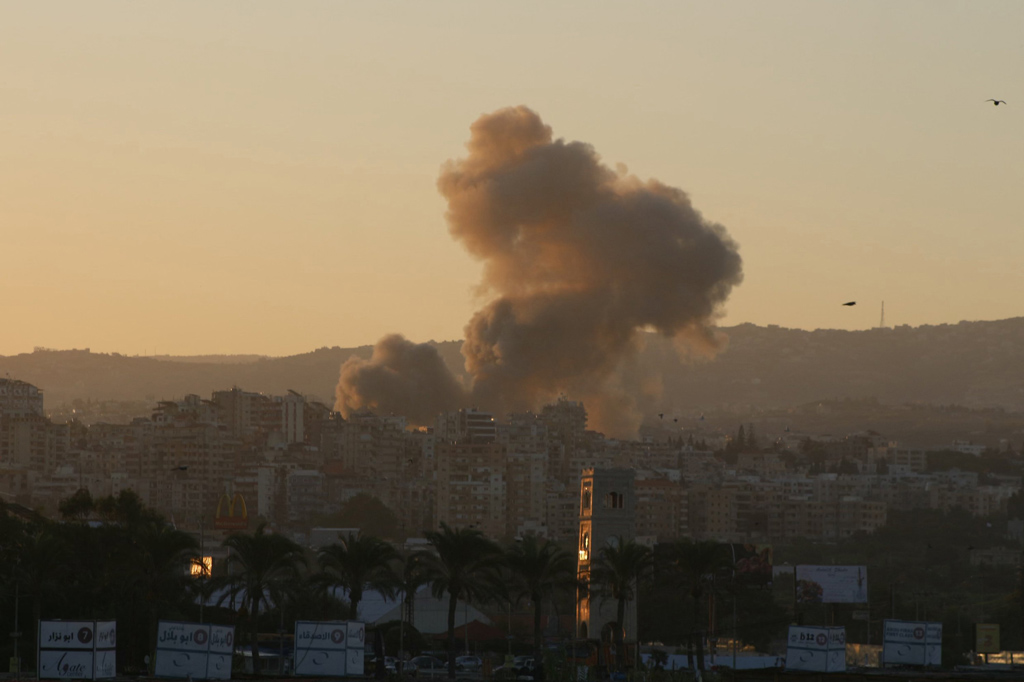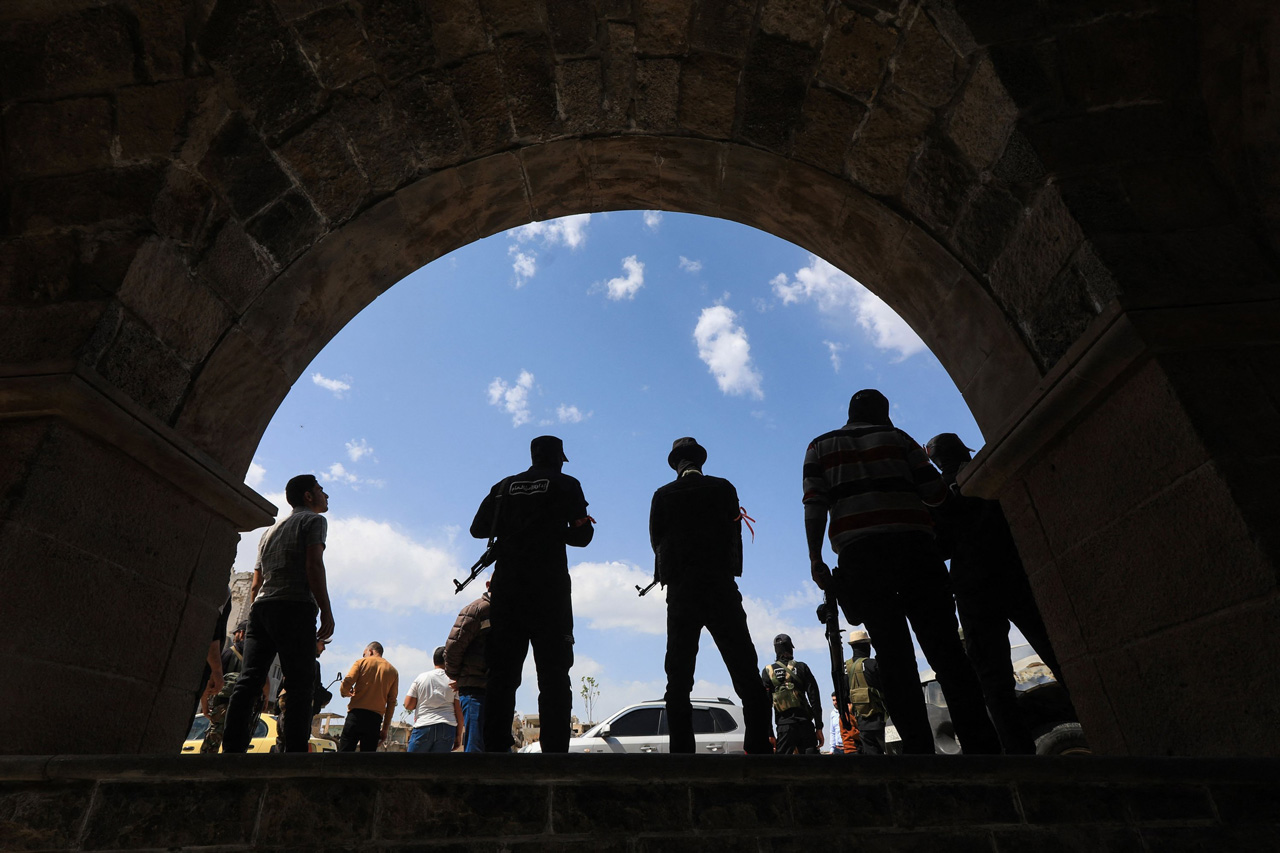On the evening of Oct. 2, a few hours before the Iranian retaliation against Israel, Israel was considered to have a clear psychological advantage in the ongoing multi-front conflict in the Gaza context. While Israel was destroying the whole of Gaza, ostensibly to destroy Hamas, it had targeted and neutralized every senior Hezbollah commander of the last decade or more in Lebanon and killed the organization’s charismatic leader, Hassan Nasrallah, in a targeted attack.
Having paralyzed Hezbollah militarily, Israel was preparing for a military invasion on the ground to create a buffer zone in southern Lebanon. In Lebanon, Israel targeted senior commanders of Iran’s Revolutionary Guards along with Hezbollah. While in Syria, it neutralized Iranian-backed elements. Israel also bombed the Houthi-controlled port of Hodeidah in Yemen, intimidating the Houthis.
These developments, which show that Israel holds the balance of deterrence and escalation dominance, clearly gave Israel a psychological superiority, albeit temporary. However, Iran’s retaliation with 200 ballistic missiles makes it necessary to rethink the events of the past few weeks. More importantly, it raises doubts about the sustainability of Israel’s psychological advantage and puts the region at risk of a wider war.
A double-edged sword
The character of Iran’s offensive package is quite different from that of April 13, and this new situation makes it difficult for Israel to maintain its deterrence and escalation dominance. The April 13 attack was timed in Israel’s favor to give Israel and its allies time to mount a defense. Iran’s initial retaliation, consisting of kamikaze drones and cruise and ballistic missiles, was mostly neutralized and failed to produce a strategic result. The Oct. 2 retaliation, however, surprisingly gave Israel and its allies limited time to defend Israel, and some of the missiles were able to hit Israeli targets. Israeli air defense systems were unable to neutralize all of the missiles, as evidenced by the resulting images, demonstrating that Iran can penetrate Israel’s critical military and civilian installations if it so chooses. Therefore, in terms of its strategic impact, it had a greater impact than the April 13 retaliation.
The content of the retaliation package was also different from that of April 13. The retaliation, mainly consisting of ballistic missiles, was accompanied by hypersonic missiles, showing that Iran’s attack inventory was quite diverse. More importantly, Israel’s lack of geographical depth and the fact that it bases its defense capability solely on technological and military superiority exposed Israel’s weaknesses in a protracted escalation game. As a result, with its latest retaliation, Iran has shown that it is not weak, that it has the capacity to play an escalation strategy and, most importantly, that its options are not limited.
In addition to these tactical and operational dimensions, Iran has at least partially allayed the suspicions that its proxies in the region have built up against it in recent weeks. This means that Iran will continue to support its friends against its regional adversaries when necessary. However, Iran is still far from providing a security umbrella for its regional proxies.
While the nature of Israel’s retaliation remains a mystery, the form, nature and scope of retaliation will determine the character of Iran’s next step and increase the risk of a regional inter-state war. This is because an Israeli retaliatory action against Iran’s nuclear facilities could provoke a swift and harsher Iranian response. Similarly, an Israeli strike on Iran’s military installations or other critical civilian infrastructure, particularly energy and other critical civilian infrastructure, will also determine the character of Iran’s likely response.

There are two critical issues in the escalation strategy. One is the scale of escalation, and the other is its sustainability. A military action always provokes a reaction and traps the parties in an escalation dilemma. Sustainability is mainly about capacity and resilience. On both issues, Israel and Iran have dilemmas and limitations. Israel taking a step up the multi-front escalation ladder could make it more vulnerable to Iran, while an escalation by Iran could shift the U.S. from a defensive to an offensive posture on Israel’s side. In this case, the escalation process would be complete and could lead to full-scale mutual aggression.
In such a situation, the parties may need to act rationally. However, rationality is a relative concept, and often, decisions are not the result of rational calculations. Given Israel’s move away from strategic rationality, it would not be surprising if it takes more risky steps. These possible steps may also lead Iran to take dangerous steps by detaching itself from the rational ground. Therefore, unless one of the parties returns to rational ground, the risk of war is always high. The current developments show that this risk of war is very high.
Revisionism vs. status quo
As Israel’s aggression in Gaza enters its second year and the risk of inter-state confrontation has increased, the Middle East is witnessing a clash of two trends. The fact that Israel targeted Lebanon after Gaza proves that Tel Aviv does not want to return to the pre-Oct. 7 status quo. Continuing its occupation in Gaza, trying to create a buffer zone by occupying southern Lebanon and aiming to defeat or completely weaken non-state armed actors shows that Israel is pursuing a revisionist policy. This revisionist policy seems to have found a response in the U.S. Although there are differences of opinion in the White House administration on the issue of limiting Israel, the current atmosphere points to blind support for Israel.
In the face of revisionism, Iran is one of the actors who want to return to the status quo. The Tehran administration, which has difficulty in protecting its proxy elements compared to previous years, is trying to create a deterrence that will ensure a return to the status quo under the pressure of direct attacks by Israel and the U.S. However, it will not be easy for Iran to return to the pre-Oct. 7 regional status quo. In this case, Iran’s expansionist proxy doctrine may have to give way to a limited nation-state security doctrine.
Looking at the countries in the region, it is hard to say that there is a single strategic goal. While the Arab states have a goal of avoiding regional war, they are not far from accepting Israel’s revisionism and are waiting for Iran to wear down so that it does not return to the status quo. Türkiye, on the other hand, has already declared that it considers the potential impact of Israel’s revisionist stance on Syria as a red line, emphasizing the need for Iran to change its security doctrine based on expansionism. President Recep Tayyip Erdoğan’s speech at the opening of the Turkish Parliament is important as it confirms Ankara’s approach.
As the ongoing genocide in Gaza passes the one-year mark, Israel’s aggressive behavior is not only drawing the region into a full-scale war but also fueling international instability. As long as Israel and Iran cannot escape from the escalation dilemma they are caught in, we are getting closer and closer to a regional war.







